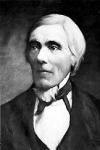Biography
Elias Lönnrot was a Finnish philologist and collector of traditional Finnish oral poetry. He is best known for composing the Kalevala, the Finnish national epic compiled from national folklore.
Education and Early Life
Lönnrot was born in Sammatti, in the province of Uusimaa in Finland. He studied medicine at the Academy of Turku. To his misfortune the year he joined was the year of the Great Fire of Turku, burning down half the town - and the University. Lönnrot (and many of the rest of the University) moved to Helsinki, where he graduated in 1832.
Early Medical Career
He got a job as district doctor of Kajaani in Northern Finland during a time of famine in the district. The famine had prompted the previous doctor to resign, making it possible for a very young doctor to get such a position. Several consecutive years of crop failure resulted in enormous losses of population and livestock; Lönnrot wrote letters to the State departments, asking for food, not medicines. He was the sole doctor for the 4,000 or so people of his district, at a time where doctors were rare and very expensive, and where people did not buy medicines from equally rare and expensive pharmacies, but rather trusted to their village healers and locally available remedies.
Linguistics Work
His true passion lay in his native Finnish language. He began writing about the early Finnish language in 1827 and began collecting folk tales from the rural people about that time.
Lönnrot went on extended leaves of absence from his doctor's office; he toured the countryside of Finland, Sapmi (Lapland), and nearby portions of Russian Karelia to support his collecting efforts. This led to a series of books: Kantele, 1829-1831 (the kantele is a Finnish traditional instrument); Kalevala, 1835-1836 (possibly Land of Heroes; better known as the "old" Kalevala); Kanteletar, 1840 (possibly Kantele Daughter); Sananlaskuja, 1842 (Proverbs); an expanded second edition of Kalevala, 1849 (the "new" Kalevala); and Finsk-Svenskt lexikon, 1866-1880 (Finnish-Swedish Dictionary).
Lönnrot was recognised for his part in preserving Finland's oral traditions by appointment to the Chair of Finnish Literature at the University of Helsinki. He died on 19 March 1884 in Sammatti, in the province of Uusimaa.
Impact
The Finnish graphic artist Erik Bruun used Lönnrot as a motif for the 500 markka banknote in his banknote series.
Don Rosa's "Quest for Kalevala" featuring Scrooge McDuck and Donald Duck has a cameo by Lönnrot.
Based on Elias Lönnrot's fame as a researcher, the Argentine author Jorge Luis Borges used the name Lönnrot for the diligent detective in his story, Death and the Compass (La muerte y la brújula), which was also made into a film by Alex Cox.
The Kalevala, the Finnish national epic that Lönnrot compiled, was among the inspirations for J.R.R. Tolkien's the Silmarillion and The Lord of the Rings.
Elias Lönnrot has been the main motif for a recent commemorative coin, the Finnish Elias Lönnrot and folklore commemorative coin, minted in 2002. On the reverse, a feather (as a symbol of an author) and Elias Lönnrot's signature can be seen. ..






